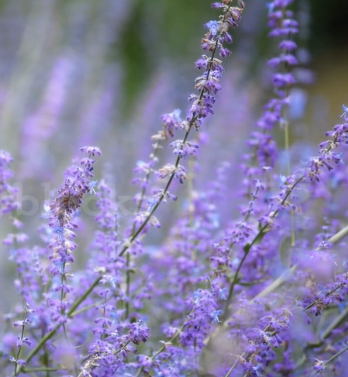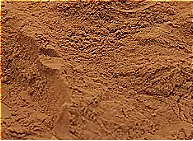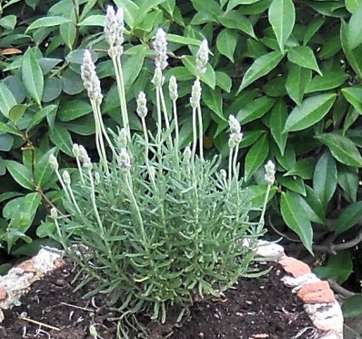![]() Lavandula angustifolia flower extract
Lavandula angustifolia flower extract
Rating : 7
| Evaluation | N. Experts | Evaluation | N. Experts |
|---|---|---|---|
| 1 | 6 | ||
| 2 | 7 | ||
| 3 | 8 | ||
| 4 | 9 | ||
| 5 | 10 |
10 pts from AColumn
| Sign up to vote this object, vote his reviews and to contribute to Tiiips.Evaluate | Where is this found? |
| "Lavandula angustifolia studies" about Lavandula angustifolia flower extract Review Consensus 10 by AColumn (9336 pt) | 2022-Nov-07 11:53 |
| Read the full Tiiip | (Send your comment) |
Compendium of the most significant studies with reference to properties, intake, effects.
Cardia GFE, Silva-Filho SE, Silva EL, Uchida NS, Cavalcante HAO, Cassarotti LL, Salvadego VEC, Spironello RA, Bersani-Amado CA, Cuman RKN. Effect of Lavender (Lavandula angustifolia) Essential Oil on Acute Inflammatory Response. Evid Based Complement Alternat Med. 2018 Mar 18;2018:1413940. doi: 10.1155/2018/1413940.
Abstract. Lavandula angustifolia is a plant of Lamiaceae family, with many therapeutic properties and biological activities, such as anticonvulsant, anxiolytic, antioxidant, anti-inflammatory, and antimicrobial activities. The aim of this study was to evaluate the effect of Lavandula angustifolia Mill. essential oil (LEO) on acute inflammatory response. LEO was analyzed using gas chromatography-mass spectrometry (GC-MS) and nuclear magnetic resonance spectroscopy (NMR) methods and showed predominance of 1,8-cineole (39.83%), borneol (22.63%), and camphor (22.12%). LEO at concentrations of 0.5, 1, 3, and 10 μg/ml did not present in vitro cytotoxicity. Additionally, LEO did not stimulate the leukocyte chemotaxis in vitro. The LEO topical application at concentrations of 0.25, 0.5, and 1 mg/ear reduced edema formation, myeloperoxidase (MPO) activity, and nitric oxide (NO) production in croton oil-induced ear edema model. In carrageenan-induced paw edema model, LEO treatment at doses of 75, 100, and 250 mg/kg reduced edema formation, MPO activity, and NO production. In dextran-induced paw edema model, LEO at doses of 75 and 100 mg/kg reduced paw edema and MPO activity. In conclusion, LEO presented anti-inflammatory activity, and the mechanism proposed of LEO seems to be, at least in part, involving the participation of prostanoids, NO, proinflammatory cytokines, and histamine.
Dobros N, Zawada K, Paradowska K. Phytochemical Profile and Antioxidant Activity of Lavandula angustifolia and Lavandula x intermedia Cultivars Extracted with Different Methods. Antioxidants (Basel). 2022 Apr 5;11(4):711. doi: 10.3390/antiox11040711.
Abstract. Lavender is a valuable perennial plant from the Lamiaceae family. It is grown mainly for its essential oil, but it also contains polar bioactive compounds such as polyphenols and coumarins. Their level depends on the species, cultivars, geographical origin, climatic conditions, harvest time and extraction method. The authors investigated the effect of several extraction procedures (maceration, decoction and ultrasound-assisted extraction) applied to three cultivars of Lavandula angustifolia (Betty's Blue, Elizabeth, Hidcote) and two cultivars of Lavandula x intermedia (Grosso, Gros Bleu) on the yield of the polyphenolic compounds and antioxidant activity. HPLC analysis showed the presence of rosmarinic acid (2.52-10.82 mg/g), ferulic acid glucoside (2.94-8.67 mg/g), caffeic acid (1.70-3.10 mg/g), morin (1.02-13.63 mg/g), coumarin (1.01-5.97 mg/g) and herniarin (1.05-8.02 mg/g). The content of phenolic acids and flavonoids was higher in lavender, while the content of coumarins was higher in lavandin in all types of extracts. The antioxidant activity was determined by DPPH-EPR assay for antiradical properties (104.58-206.77 μmol Trolox/g) and FRAP assay for reducing properties (79.21-203.06 μmol Trolox/g). The obtained results showed that the cultivar is the dominant factor differentiating the samples. Still, the extraction method plays an important role in the final bioactive substances content and antioxidant properties of obtained extracts.

Dębczak A, Tyśkiewicz K, Fekner Z, Kamiński P, Florkowski G, Konkol M, Rój E, Grzegorczyk A, Malm A. Molecular Distillation of Lavender Supercritical Extracts: Physicochemical and Antimicrobial Characterization of Feedstocks and Assessment of Distillates Enriched with Oxygenated Fragrance Components. Molecules. 2022 Feb 22;27(5):1470. doi: 10.3390/molecules27051470.
Abstract. Lavandula angustifolia is one of the most widely cultivated non-food crops used in the production of essential oil; it is used in perfumery, aromatherapy, pharmaceutical preparations, and food ingredients. In this study, supercritical fluid extraction (SFE) and molecular distillation (MD) were combined, primarily to enrich scCO2 extracts with lavender oxygenated monoterpenes, avoiding thermal degradation, hydrolysis, and solvent contamination, and maintaining the natural characteristics of the obtained oils. Molecular distillation was developed for the first time for the extraction of crucial lavender fragrance ingredients, i.e., from two scCO2 extracts obtained from dry flower stems of lavender cultivated in Poland and Bulgaria. The best results for high-quality distillates were obtained at 85 °C (EVT) and confirmed that linalyl acetate content increased from 51.54 mg/g (initial Bulgarian lavender extract, L-Bg-E) and 89.53 mg/g (initial Polish lavender extract, L-Pl-E) to 118.41 and 185.42 mg/g, respectively, corresponding to increases of 2.3 and 2.1 times in both distillate streams, respectively. The distillates, light oils, and extracts from lavender were also evaluated for their antimicrobial properties by determining the minimum inhibitory concentration (MIC) by the broth microdilution method. Generally, Gram-positive bacteria and Candida spp. were more sensitive to all distilled fractions and extracts than Escherichia coli (Gram-negative bacteria).
Białoń M, Krzyśko-Łupicka T, Nowakowska-Bogdan E, Wieczorek PP. Chemical Composition of Two Different Lavender Essential Oils and Their Effect on Facial Skin Microbiota. Molecules. 2019 Sep 8;24(18):3270. doi: 10.3390/molecules24183270.
Abstract. Lavender oil is one of the most valuable aromatherapy oils, its anti-bacterial and anti-fungal activities can be explained by main components such as linalool, linalyl acetate, lavandulol, geraniol, or eucalyptol. The aim of the study was to assess the anti-microbial effects of two different lavender oils on a mixed microbiota from facial skin. The commercial lavender oil and essential lavender oil from the Crimean Peninsula, whose chemical composition and activity are yet to be published, were used. Both oils were analysed by gas chromatography coupled to mass spectrometry. The composition and properties of studied oils were significantly different. The commercial ETJA lavender oil contained 10% more linalool and linalyl acetate than the Crimean lavender oil. Both oils also had different effects on the mixed facial skin microbiota. The Gram-positive bacilli were more sensitive to ETJA lavender oil, and Gram-negative bacilli were more sensitive to Crimean lavender oil. However, neither of the tested oils inhibited the growth of Gram-positive cocci. The tested lavender oils decreased the cell number of the mixed microbiota from facial skin, but ETJA oil showed higher efficiency, probably because it contains higher concentrations of monoterpenoids and monoterpenes than Crimean lavender oil does.
Pandur E, Balatinácz A, Micalizzi G, Mondello L, Horváth A, Sipos K, Horváth G. Anti-inflammatory effect of lavender (Lavandula angustifolia Mill.) essential oil prepared during different plant phenophases on THP-1 macrophages. BMC Complement Med Ther. 2021 Nov 24;21(1):287. doi: 10.1186/s12906-021-03461-5.
Abstract. Background: Pseudomonas aeruginosa is the most common Gram-negative bacterium associated with nosocomial respiratory infections. Lavender essential oil is mainly used in aromatherapy, but it has several pharmacological and therapeutic properties. Furthermore, it possesses antifungal and antibacterial activities. The anti-inflammatory activity of essential oils may depend on the composition and the ratio of the compounds. The constitution of the essential oils extracted from the different stages of flowering period varies, which makes it plausible that the collection time of the flowers influences the anti-inflammatory effects. Different types of essential oils reduce inflammation acting similarly by modulating the activity and action of the NFκB signalling pathway, which is the major regulator of the transcription of pro-inflammatory cytokines....Conclusion: Based on our results it has been proven that lavender essential oil extracted at the beginning of flowering period is a potent inhibitor of the synthesis of four pro-inflammatory cytokines IL-6, IL-8, IL-β and TNFα of THP-1 cells. This supports the relevance of the collection of the lavender flowers from early blooming period for essential oil production and for the utilization as an anti-inflammatory treatment. © 2021. The Author(s).

Koycheva IK, Vasileva LV, Amirova KM, Marchev AS, Balcheva-Sivenova ZP, Georgiev MI. Biotechnologically Produced Lavandula angustifolia Mill. Extract Rich in Rosmarinic Acid Resolves Psoriasis-Related Inflammation Through Janus Kinase/Signal Transducer and Activator of Transcription Signaling. Front Pharmacol. 2021 Apr 27;12:680168. doi: 10.3389/fphar.2021.680168.
Abstract. Psoriasis is a common skin pathology, characterized by dysregulation of epidermal keratinocyte function attended by persistent inflammation, suggesting that molecules with anti-inflammatory potential may be effective for its management. Rosmarinic acid (RA) is a natural bioactive molecule known to have an anti-inflammatory potential. Here we examined the effect of biotechnologically produced cell suspension extract of Lavandula angustifolia Mill (LV) high in RA content as treatment for psoriasis-associated inflammation in human keratinocytes. Regulatory genes from the nuclear factor kappa B (NF-κB) and Janus kinase/signal transducer and activator of transcription (JAK/STAT) signaling pathways were upregulated upon stimulation with a combination of interferon gamma (IFN-γ), interleukin (IL)-17A and IL-22. We also observed that both LV extract and RA could inhibit JAK2, leading to reduced STAT1 phosphorylation. Further, we demonstrated that LV extract inhibited phosphoinositide 3-kinases (PI3K) and protein kinase B (AKT), which could be implicated in reduced hyperproliferation in keratinocytes. Collectively, these findings indicate that the biotechnologically produced LV extract resolved psoriasis-like inflammation in human keratinocytes by interfering the JAK2/STAT1 signaling pathway and its effectiveness is due to its high content of RA (10%). Hence, both LV extract and pure RA possess the potential to be incorporated in formulations for topical application as therapeutic approach against psoriasis. Copyright © 2021 Koycheva, Vasileva, Amirova, Marchev, Balcheva-Sivenova and Georgiev.
Bogdan MA, Bungau S, Tit DM, Zaha DC, Nechifor AC, Behl T, Chambre D, Lupitu AI, Copolovici L, Copolovici DM. Chemical Profile, Antioxidant Capacity, and Antimicrobial Activity of Essential Oils Extracted from Three Different Varieties (Moldoveanca 4, Vis Magic 10, and Alba 7) of Lavandula angustifolia. Molecules. 2021 Jul 20;26(14):4381. doi: 10.3390/molecules26144381.
Abstract. Chemical composition, antioxidant capacity, and antimicrobial activity of lavender essential oils (LEOs) extracted from three different varieties of Lavandula angustifolia Mill. (1-Moldoveanca 4, 2-Vis magic 10, and 3-Alba 7) have been determined. These plants previously patented in the Republic of Moldova were cultivated in an organic agriculture system in the northeastern part of Romania and then harvested in 3 consecutive years (2017-2019) to obtain the essential oils. From the inflorescences in the complete flowering stage, the LEOs were extracted by hydrodistillation. Then, their composition was analyzed by gas chromatography coupled with mass spectrometry (GC-MS) and by Fourier Transformed Infrared spectroscopy (FT-IR). The major identified constituents are as follows: linalool (1: 32.19-46.83%; 2: 29.93-30.97%; 3: 31.97-33.77%), linalyl acetate (1: 17.70-35.18%; 2: 27.55-37.13%; 3: 28.03-35.32%), and terpinen-4-ol (1: 3.63-7.70%; 2: 3.06-7.16%; 3: 3.10-6.53%). The antioxidant capacity as determined by ABTS and DPPH assays indicates inhibition, with the highest activity obtained for LEO var. Alba 7 from 2019. The in vitro antimicrobial activities of the LEOs and combinations were investigated as well, by using the disk diffusion method and minimum inhibitory concentration (MIC) against the Gram-positive bacterial strain Staphylococcus aureus (ATCC 6538), Gram-negative Pseudomonas aeruginosa (ATCC 27858), Escherichia coli (ATCC 25922), the yeast Candida albicans (ATCC 10231), and clinical isolates. Our results have shown that LEOs obtained from the three studied varieties of L. angustifolia manifest significant bactericidal effects against tested microorganisms (Staphylococcus aureus and Escherichia coli), and antifungal effects against Candida albicans. The mixture of LEOs (Var. Alba 7) and geranium, respectively, in tea tree EOs, in different ratios, showed a significant enhancement of the antibacterial effect against all the studied strains, except Pseudomonas aeruginosa.
| Sign up to vote this object, vote his reviews and to contribute to Tiiips.EvaluateClose | (0 comments) |
| "Descrizione" about Lavandula angustifolia flower extract Review Consensus 10 by AColumn (9336 pt) | 2023-Jun-16 12:08 |
| Read the full Tiiip | (Send your comment) |
Lavandula angustifolia flower extract is an extract obtained from the flowers of the aromatic perennial shrub Lavandula angustifolia Mill. the narrow-leaved lavender belonging to the Lamiaceae family. Extraction is by hydro-alcoholic method with immersion in 50% ethanol followed by maceration, centrifugation and ultrasound-assisted extraction. High-power ultrasound corresponding to frequencies of 20 or 25 kHz seems to offer a good method of extraction and can be applied using two types of devices, the ultrasonic bath or the probe ultrasound equipment. The probe system is more powerful due to the intensity of the ultrasound delivered through a smaller surface area than the ultrasonic bath.

The extraction process produces a variety of phenolic compounds and flavonoids. The most abundant compound is 2,5-dihydroxybenzoic acid, which accounts for more than 40 per cent of the polyphenol fraction obtained by ultrasound-assisted extraction. Other phenolic compounds were also present, such as caffeic, chlorogenic and p-coumaric acids.
The overall amount of flavonoids is much higher in the ultrasound-assisted extraction samples than in the distillation waste. The presence of flavonoid glycosides is highly variable within the subgenus Lavandula, resulting in flavonoid profiles that may differ between species groups.
Industrially it appears as a brown powder

What it is used for and where
The extracted compounds have potential applications in various industries. Gentisic acid, which is particularly abundant, is described as an analgesic, anti-inflammatory, anti-rheumatic, anti-arthritic, cytostatic and fibroblast growth factor inhibitor. It also appears to inhibit the oxidation of low-density lipoproteins in human plasma. Furthermore, gentisic acid-rich extracts could be exploited as a cosmetic ingredient for skin-lightening applications. The relative abundance of quercetin derivatives could find application in skin care formulations for their anti-inflammatory properties.
Medical
Lavender flowers and leaves are used in the form of extracts in phytotherapy to relieve anxiety, insomnia, and depression, while lavender's anti-inflammatory activity is due to its significant content of polyphenols, flavonoids, and oxygenated monoterpenes such as linalool (1).
This study considers that, in light of literature reports as an effective medical plant in the treatment of inflammation, depression and stress, due to its sedative and anxiolytic action, thrombotic and antimicrobial properties, the results demonstrate DNA protective activity (2).
Cosmetics
Lavender extract and oil are commonly used in detergents, industrial and domestic cleaning products, and in hygiene due to the presence of higher levels of camphor. Although lavender essential oil is more widely used in cosmetics, the flower extract has very similar characteristics and is useful as a preservative, antibacterial and skin regenerator. Antibacterial substances of natural origin help control the growth of microorganisms in the skin microbiota and accelerate the development and regeneration of skin cells (3).

Cleansing agent. Ingredient that cleanses skin without exploiting the surface-active properties that produce a lowering of the surface tension of the stratum corneum.
Deodorant agent. When substances that give off an unpleasant odour are included in cosmetic formulations (typical examples are methyl mercaptan and hydrogen sulphide derived from garlic), deodorants attenuate or eliminate the unpleasant exhalation. It helps counteract the formation of bad odours on body surfaces.
Fragrance. It plays a decisive and important role in the formulation of cosmetic products as it provides the possibility of enhancing, masking or adding fragrance to the final product, increasing its marketability. It is able to create a perceptible pleasant odour, masking a bad smell. The consumer always expects to find a pleasant or distinctive scent in a cosmetic product.
Refreshing. This ingredient is included in cosmetic products to provide a refreshing or toning sensation to the skin and can also help relieve irritation or redness.
Tonic. This product is used to treat the hair when the scalp is clean or after shampooing. It stimulates hair growth, revitalises the scalp for healthy hair growth and reduces hair loss. It provides a feeling of well-being on skin and hair.
Other uses
Used as a tea to aid sleep
For more information:
Lavandula angustifolia studies
Typical commercial product characteristics Dried Lavender Flower
| Appearance | Brown powder |
| Loss on drying | <5.0% |
| Residue on Ignition | <5.0% |
| Heavy metals | <10.0ppm |
| As | <2.0ppm |
| Pb | <2.0ppm |
| Hg | 0.1ppm |
| Total plate | <10,000cfu/g |
| Yeast & Mold | <1000cfu/g |
| Aflatoxins | 0.2ppb |
| Storage | Keep away from strong,direct light. Clean,cool,dry area |
| Shelf Life | 24 months |
CAS 90063-37-9
EC number 289-995-2
References________________________________________________________________________
(1) Hajhashemi V, Ghannadi A, Sharif B. Anti-inflammatory and analgesic properties of the leaf extracts and essential oil of Lavandula angustifolia Mill. J Ethnopharmacol. 2003 Nov;89(1):67-71. doi: 10.1016/s0378-8741(03)00234-4.
(2) Kozics K, Srancikova A, Sedlackova E, Horvathova E, Melusova M, Melus V, Krajcovicova Z, Sramkova M. Antioxidant potential of essential oil from Lavandula angustifolia in in vitro and ex vivo cultured liver cells. Neoplasma. 2017;64(4):485-493. doi: 10.4149/neo_2017_401.
(3) Brud, W., & Konopacka-Brud, I. (1998). Essential oils as active substances in cosmetics. Herb. Messages, 7(8), 8-10.
| Sign up to vote this object, vote his reviews and to contribute to Tiiips.EvaluateClose | (0 comments) |
Read other Tiiips about this object in __Italiano (2)
Component type: Natural Main substances:
Last update: 2022-11-07 11:26:42 | Chemical Risk: |


